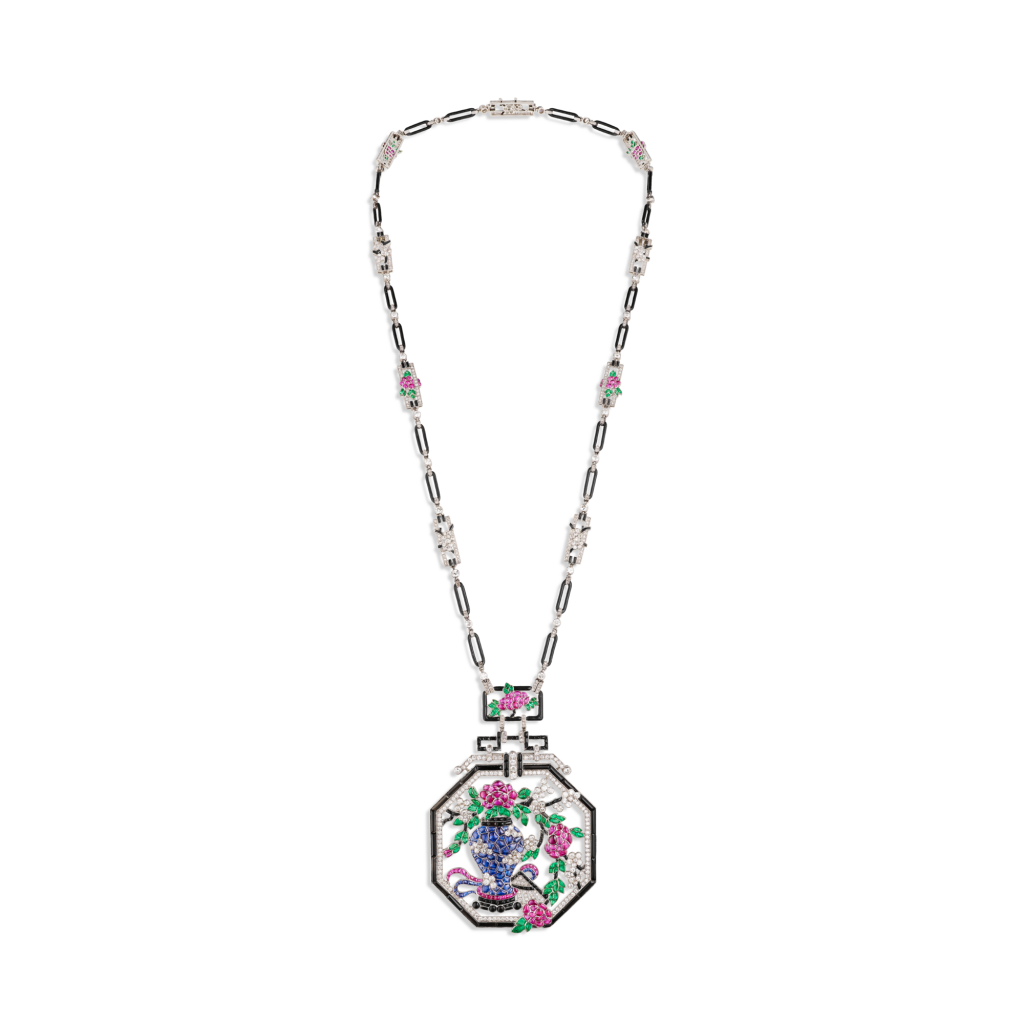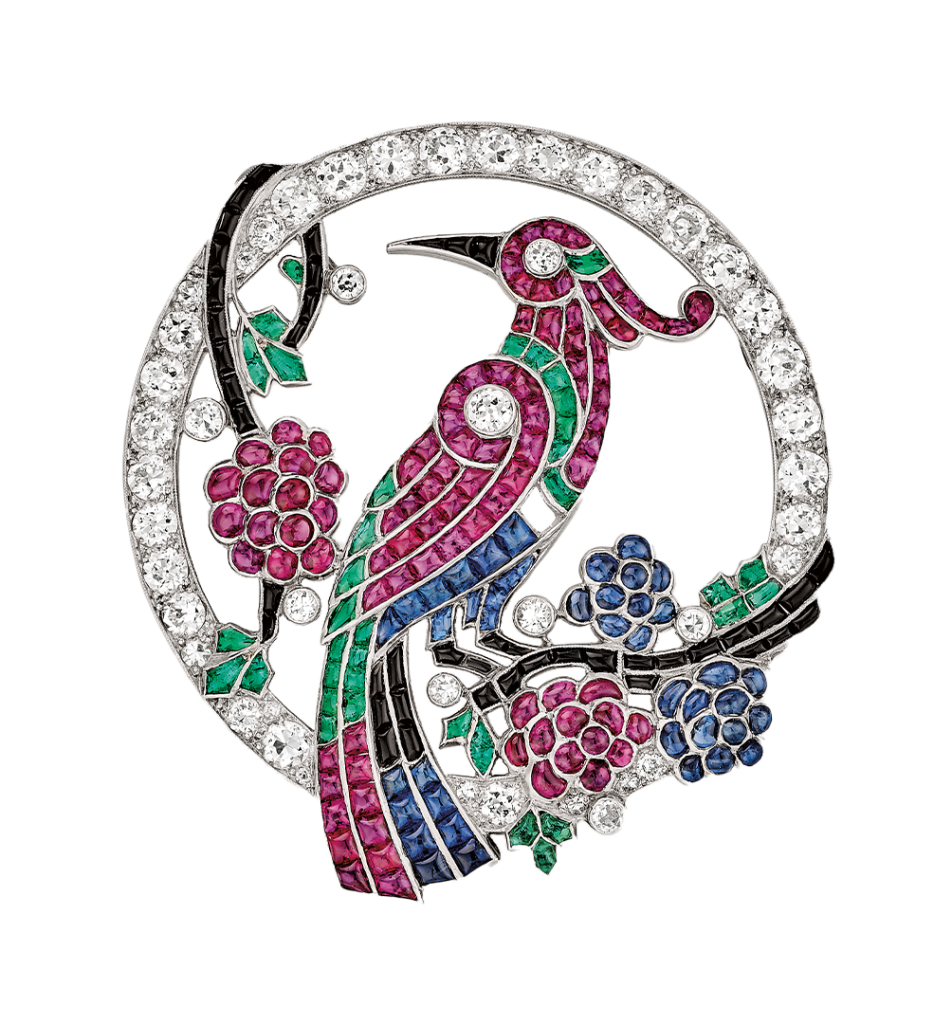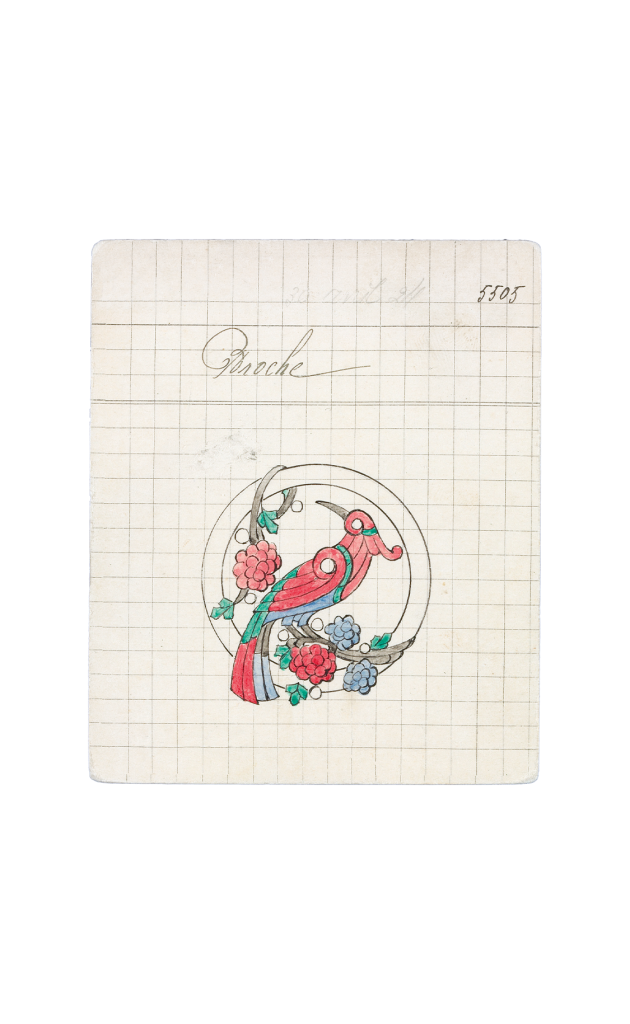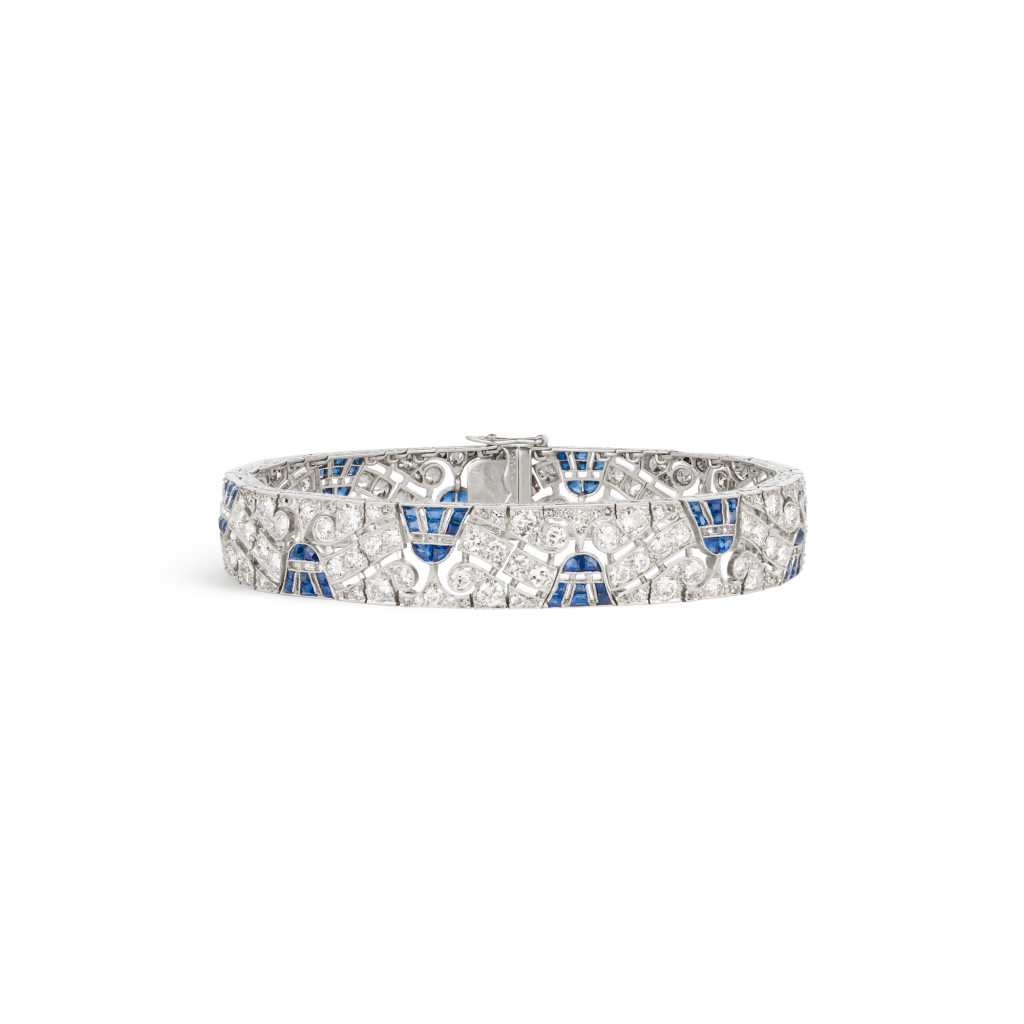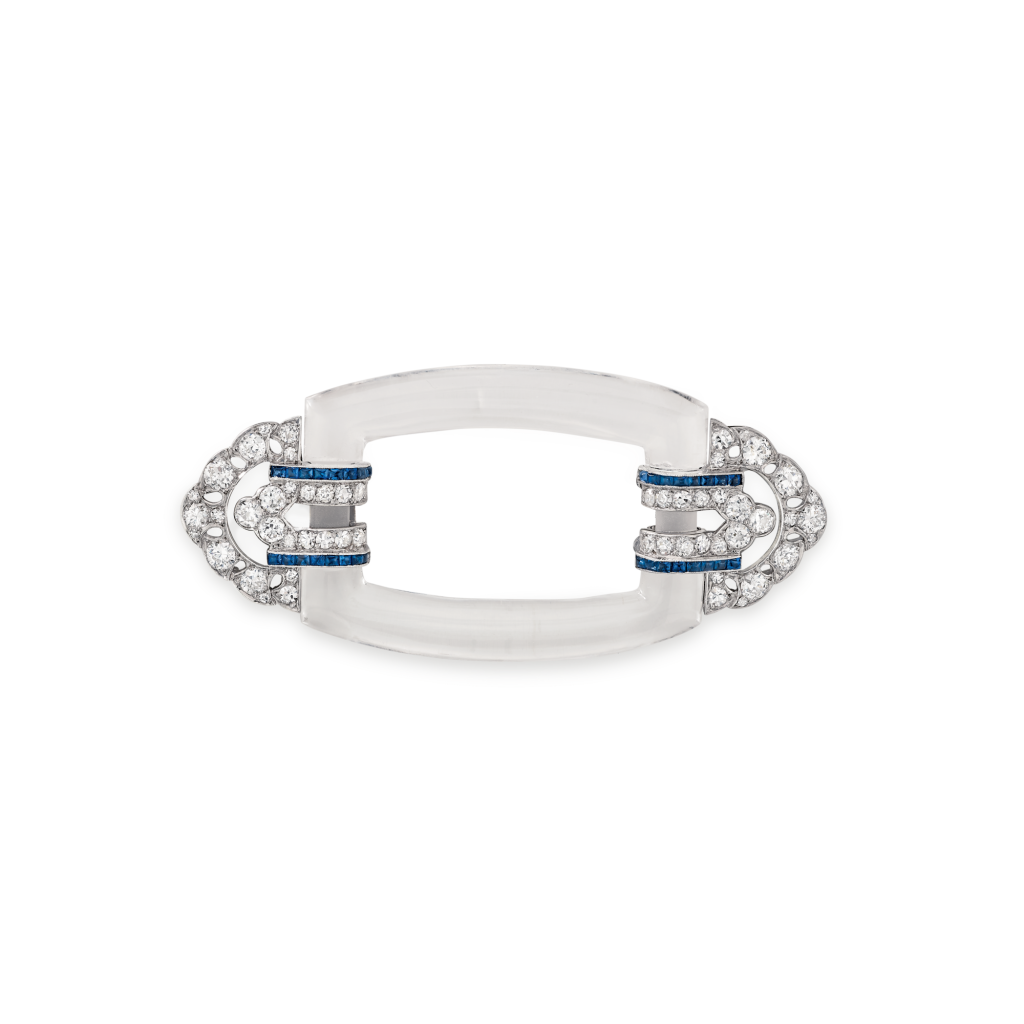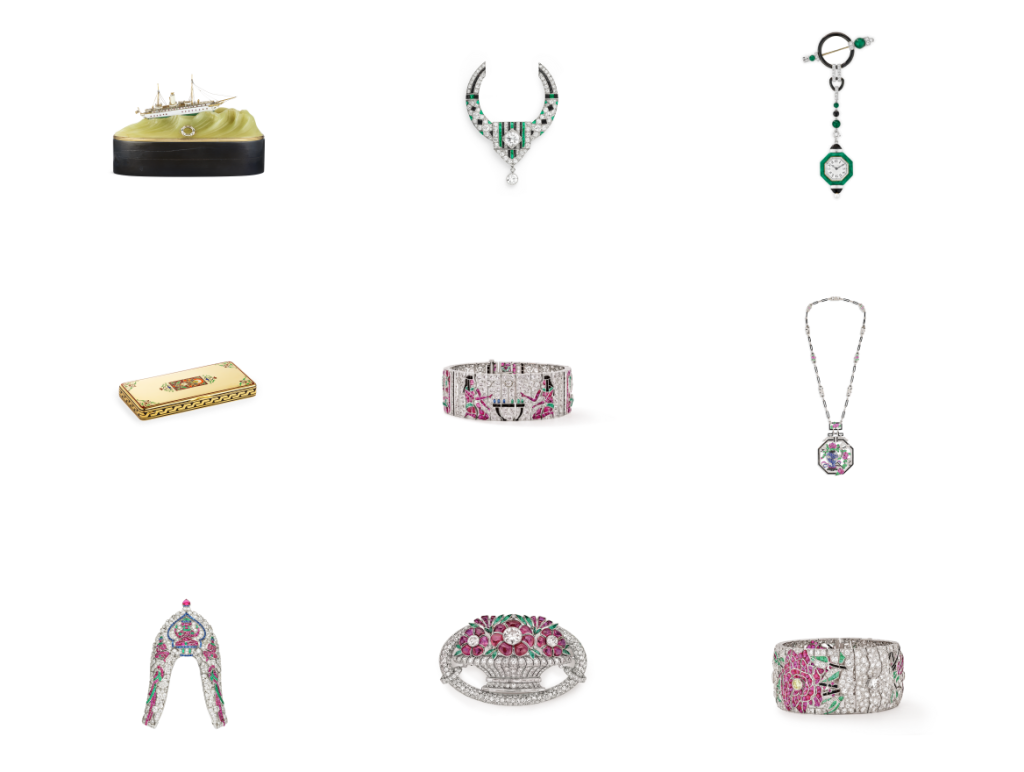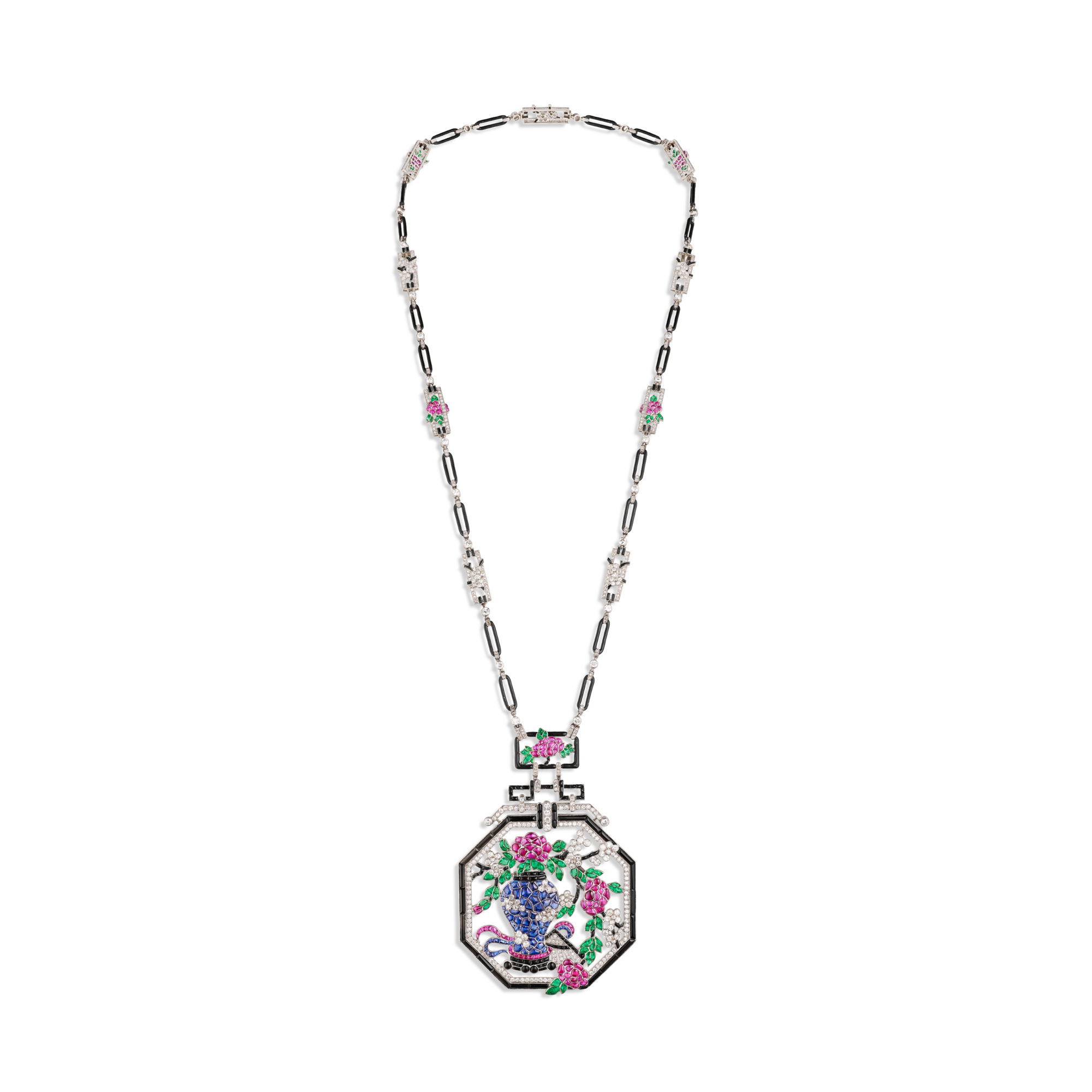
Long necklace

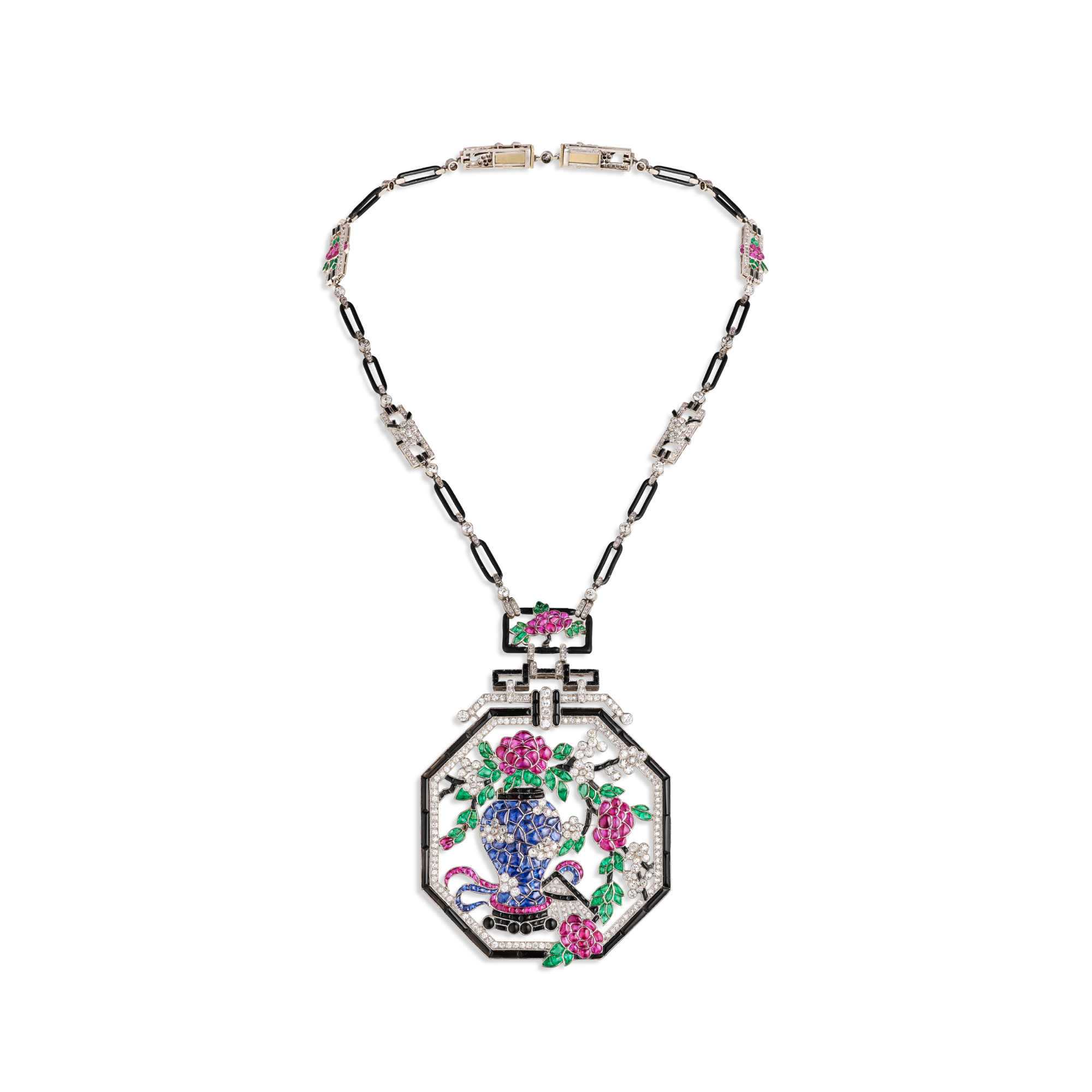
Creation details
- Creation year 1924
- Usage Long necklace
- Dimensions 60 × 60 mm
This long necklace, created in 1924, is composed of a platinum chain and pendant enhanced with enamel, onyx, sapphires, emeralds, buff-top rubies, and rose-cut and brilliant-cut diamonds.
Its geometric composition and flat tints used for its motifs are typical of the Art Deco style. This long necklace is transformable—a quality dear to the Maison. The chain, composed of oblong openwork elements, some of which are decorated with floral elements, can be worn on its own. The pendant can be detached from the chain thanks to an ingenious screw system and worn as a brooch.
The octagonal form of the pendant, set with onyx and diamonds, symbolizes the passage between two worlds. It opens onto a “way of flowers” or an ikebana, a traditional Japanese art form (of Chinese origin) that celebrates the harmony of flower arrangement and includes the vase, branches, stalks, leaves, and flowers at one and the same time. In ikebana, an art form initially reserved for religious purposes, the beauty of a floral composition resides in the balance between colors and forms (stalks, corolla, leaves, etc.), while the varied orientation of the stalks symbolizes heaven, humanity, and earth.
Red camelias, symbolizing love and harmony, and plum-tree blossom, expressing resilience, rise up from a traditional blue and white vase to form the floral composition adorning the pendant here. The emeralds, sapphires, and rubies are buff-top cut, meaning they are cabochon cut on the upper section and faceted below to reflect the light. This confers great warmth to the piece. A fan, an iconic object of Asian art of living, lies at the foot of the vase. It is black and white, composed of onyx and diamonds, and decorated with red and blue ribbons of buff-top sapphires and rubies.
A piece of jewelry chosen by Jules, known as Julien Arpels
The archives relating to this outstanding piece of jewelry refer to the “Long necklace Number 3, chosen by Monsieur Julien.” Jules Arpels, known as Julien, joined the family business in 1908, managed at that time by Alfred Van Cleef and Charles Arpels. Julien became a great authority on gemstones and had an expert eye for colored stones. Through his extensive travels, he established relationships that proved valuable for the Maison’s development.
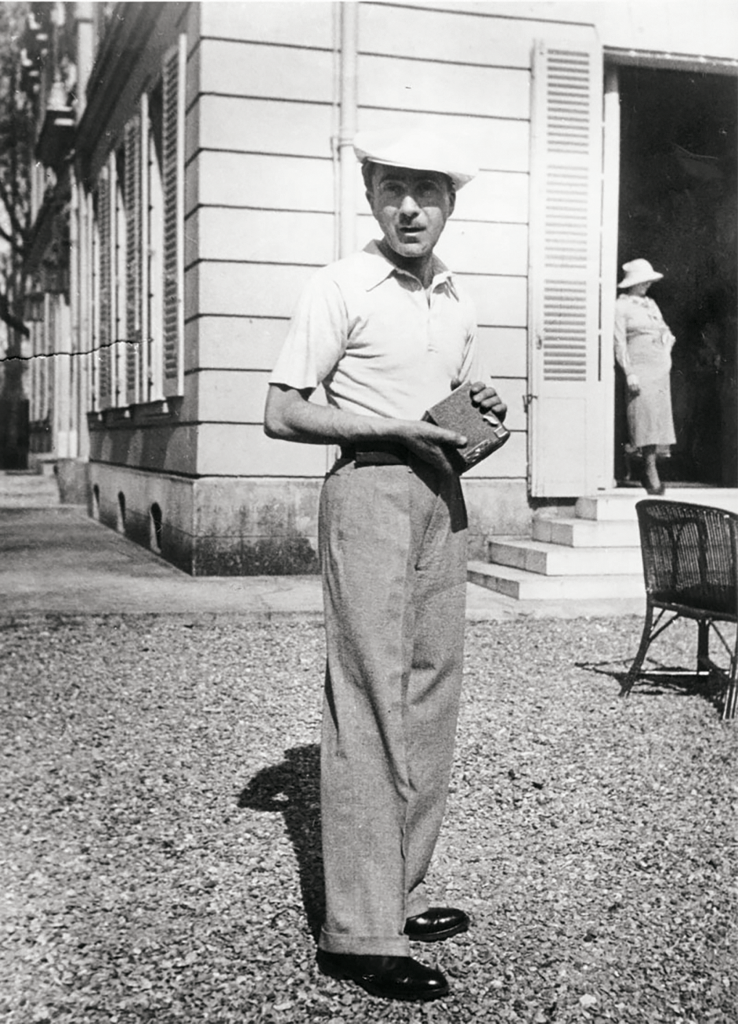
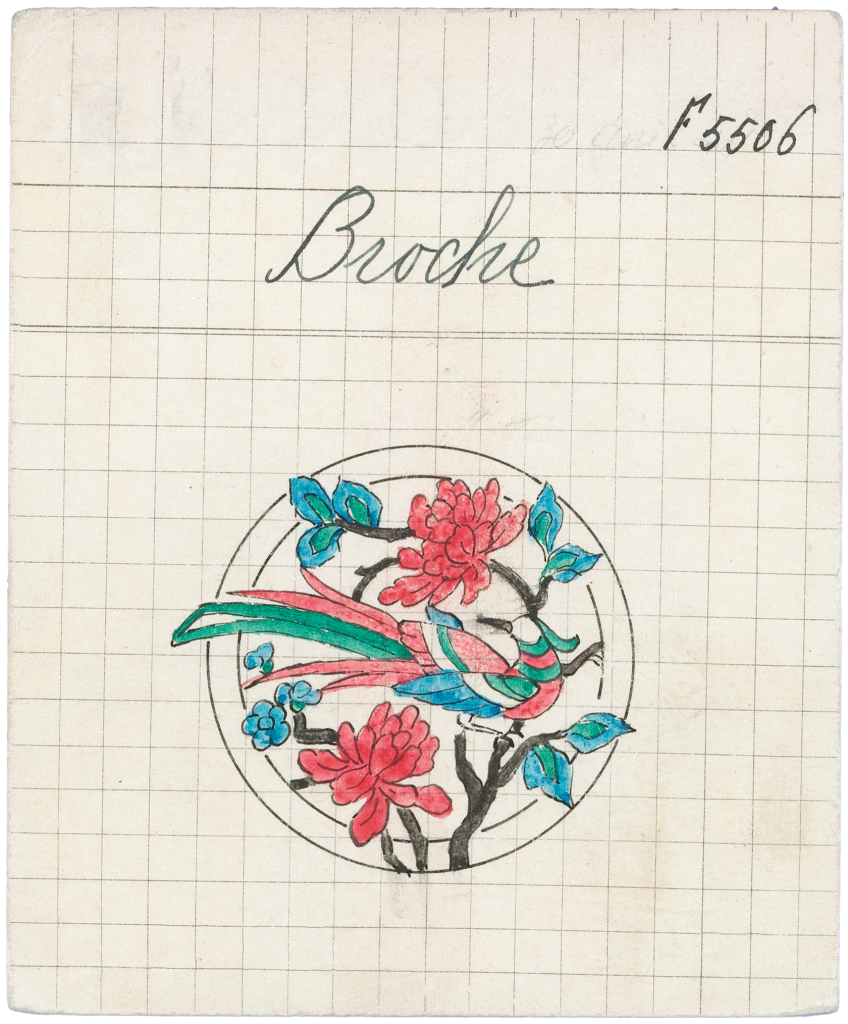
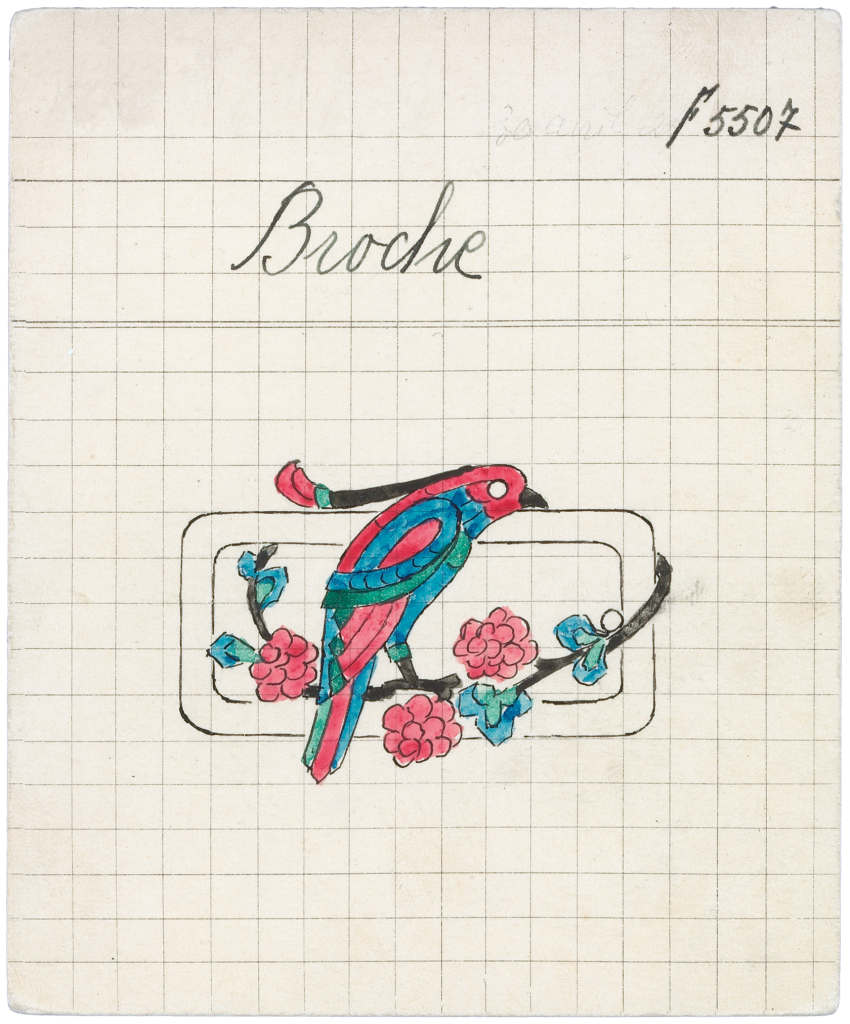
To go deeper
